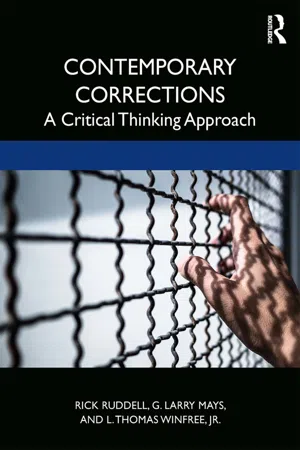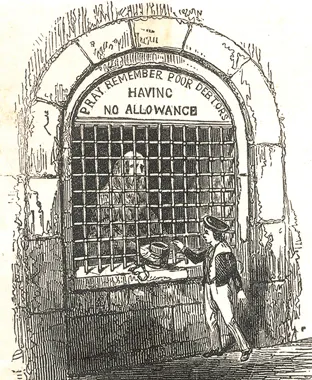
Contemporary Corrections
A Critical Thinking Approach
- 584 pages
- English
- ePUB (mobile friendly)
- Available on iOS & Android
Contemporary Corrections
A Critical Thinking Approach
About this book
Contemporary Corrections: A Critical Thinking Approach introduces readers to the essential elements of the US corrections system without drowning students in a sea of nonessential information. Unbiased and accessible, the text includes coverage of the history of corrections, alternatives to incarceration, probation/parole, race/ethnicity/gender issues in corrections, re-entry into the community, and more. The authors' unparalleled practical approach, reinforced by contemporary examples, illuminates the role corrections plays in our society.
The authors have reinvigorated earlier work with additional content on international comparative data to increase our understanding of how prison officials in other nations have developed different types of responses to the problems that challenge every US correctional administrator, a new chapter on correctional personnel, and an integration of race and ethnicity issues throughout the book.
Unrivaled in scope, this book offers undergraduates a concise but comprehensive introduction to corrections with textual materials and assignments designed to encourage students' critical thinking skills.
Frequently asked questions
- Essential is ideal for learners and professionals who enjoy exploring a wide range of subjects. Access the Essential Library with 800,000+ trusted titles and best-sellers across business, personal growth, and the humanities. Includes unlimited reading time and Standard Read Aloud voice.
- Complete: Perfect for advanced learners and researchers needing full, unrestricted access. Unlock 1.4M+ books across hundreds of subjects, including academic and specialized titles. The Complete Plan also includes advanced features like Premium Read Aloud and Research Assistant.
Please note we cannot support devices running on iOS 13 and Android 7 or earlier. Learn more about using the app.
Information
Chapter 1
OUTLINE
- Introduction
- Overview of American Correctional Systems
- Philosophies of Punishment
- Direct and Indirect Costs of Imprisonment
- Five Trends Affecting Corrections Today
- Summary
- Describe the extent of correctional populations
- Explain how six philosophies of punishment underlie the operations of community and institutional corrections
- Describe how vested interests influence the operations of correctional systems
- Describe the differences between the direct and indirect costs of correctional interventions
- Describe five key trends shaping corrections today
Case Study
Incarcerating Deadbeat Dads
- Are there other alternatives, both within and outside the justice system, to ensure single parents receive their court-ordered support?
- What is the benefit to taxpayers, to hold a deadbeat dad for six months because he cannot pay his court-ordered payments?
- Why would prosecutors and police officers oppose the introduction of policies intended to reduce incarceration?
Introduction

Total Community and Institutional Correctional Population, 1980–2017.

The drawing captures a common moment in the life of a nineteenth-century debtor in London, England, who, without the personal resources to maintain himself in debtor’s prison, must rely on the charity of others, in this case a small boy. Credit: Pictorial Press Ltd/Alamy Stock Photo.
Overview of American Correctional Systems
Table of contents
- Cover
- Half Title
- Title Page
- Copyright Page
- Dedication
- Table of Contents
- Preface
- Acknowledgments
- Chapter 1 Introduction to Corrections
- Chapter 2 A Brief History of Punishments and Corrections
- Chapter 3 Sentencing and Criminal Sanctions
- Chapter 4 Probation and Community Corrections
- Chapter 5 Jails and Detention Facilities
- Chapter 6 Institutional Corrections
- Chapter 7 Correctional Personnel
- Chapter 8 Prisoners and Prison Life
- Chapter 9 Living and Dying in Prison
- Chapter 10 Parole and Prisoner Reentry
- Chapter 11 Gender Issues in Corrections
- Chapter 12 Corrections Law and Inmate Litigation
- Chapter 13 The Future of Corrections
- Glossary / Index